Ethel and Narcissus - a closer look at two of Waterhouse’s models
By Scott Thomas Buckle
Late in 2004, whilst looking through John William Waterhouse’s old sketchbooks at the V&A, I discovered the names of several models, recorded by the artist along with details of their addresses.
In one of the sketchbooks (E.1111-1963) two names particularly caught my attention as they were inscribed, as an aide-mémoire for the artist, beside a sketch of Echo and Narcissus. The names ‘Beresford’ and what I initially deciphered as “Miss Bantick’ clearly related to the models who posed for Waterhouse’s celebrated painting, exhibited at the Royal Academy in 1903, and now in the Walker Art Gallery, Liverpool.

John William Waterhouse
Page with models’ addresses
Sketchbook, E.1111-1963
Victoria and Albert Museum, London
It proved an easy task to identify the former – ‘Beresford’, along with his address at 19 St Olaf’s Road, Fulham, matched up with an entry for a ‘Henry Beresford’ in the 1901 Census. The 21 year old was living there with his 42 year old widowed mother, Clara, and gives his occupation as ‘Artist’s Model’ in the census entry. Fulham may initially seem an unlikely place to find the model for Narcissus, but the area had been home to artists like Burne-Jones and Holman Hunt, and a number of Italian models had settled in the neighbouring borough of Hammersmith.
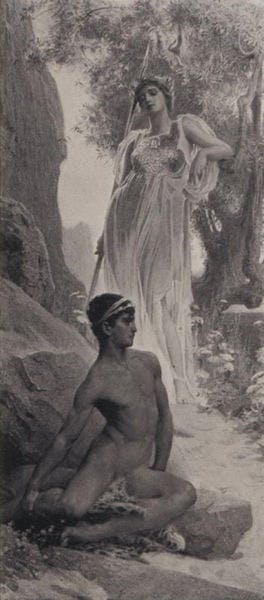
Herbert James Draper
The Youth of Ulysses, 1895
from Royal Academy Pictures, 1895
In his 2003 monograph on Herbert Draper, Simon Toll recorded that Harry Beresford had modelled for John William Waterhouse’s Echo and Narcissus, but also that, aged 14, he had posed for Draper’s the Youth of Ulysses, although in the finished version of that painting the artist worked from Giuseppi Servi, a young ice cream vendor from Hammersmith. The final model for the head of ‘Athene’ in Draper’s painting was Mary Lloyd, who is also known to have posed for Waterhouse, amongst others. It is also known that Waterhouse introduced Draper to another of his models, Agnes Richardson, although Draper thought her sister Edith the better model.
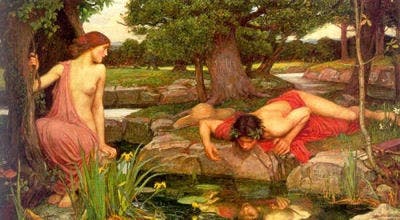
John William Waterhouse
Echo and Narcissus, 1903
Walker Art Gallery, Liverpool, England
In June 2006 an old vellum bound book appeared on the art market, which had been used by the artist John Seymour Lucas RA (1849-1923) to record the addresses of clients and models. The artist had made notes on the sitters’ facial features, complexion, hair colour etc and in many cases included a thumbnail sketch of the model’s face.
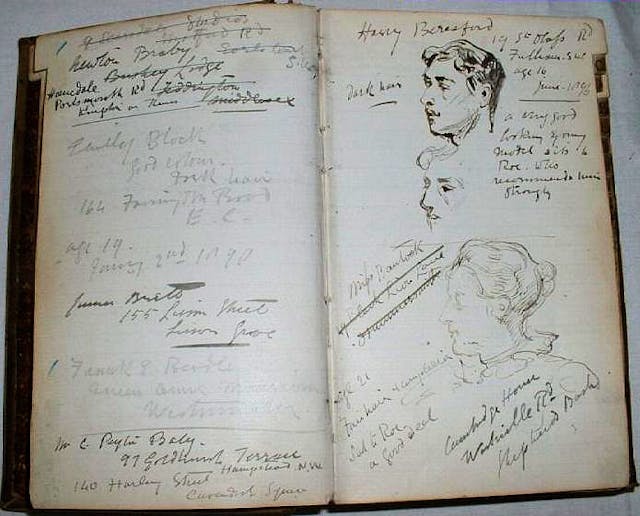
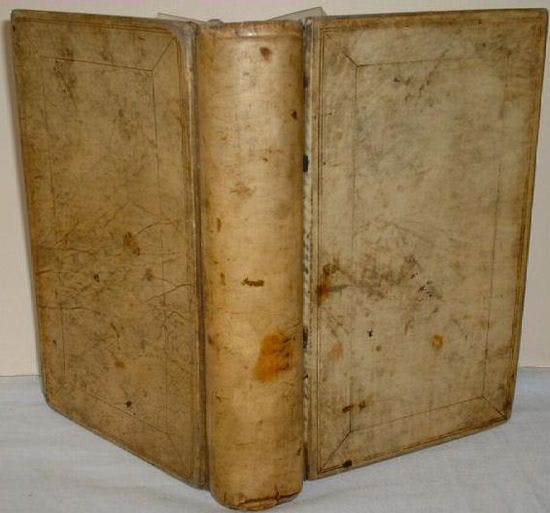
Page from Seymour Lucas’s address book (left); cover of address book (right).
Private Collection, York.
The names were entered in the book alphabetically, and at the top of one page in the ‘B’ section appears ‘Harry Beresford...aged 16, 1896,’ along with his Fulham address. As well as recording that he had ‘dark hair’, Seymour Lucas also describes him as ‘a very good looking young model - sits to Roe, who recommends him strongly’. The likeness of Harry Beresford accords almost exactly with one of the figures in Seymour Lucas’s 1896 Royal Academy picture A Story of the Spanish Main.
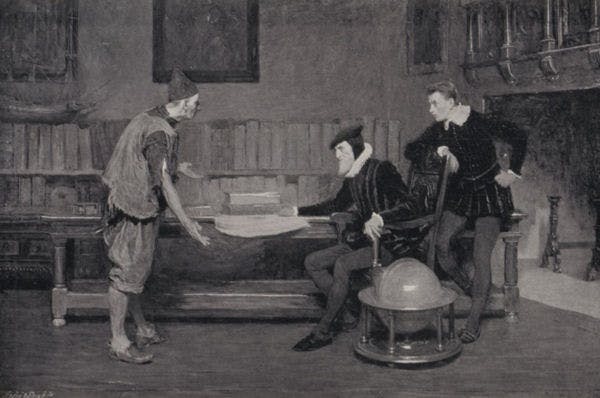
John Seymour Lucas
A Story of the Spanish Main, 1896
from Royal Academy Pictures, 1896
The facial resemblance to Narcissus is less obvious, but thanks to the annotations in the Seymour Lucas address book we can confirm that this depicts young Harry’s appearance at the time. Further down the page in the address book the artist has sketched a second sitter, this time a female model. Although, once again, Seymour Lucas’s likeness of her bears no marked resemblance to the model for Echo, the name ‘Miss Bantock’ is more clearly inscribed than in Waterhouse’s hand in his own sketchbook. She appears on the same page of the address book as Harry Beresford because her surname also begins with ‘B’, but both models were probably introduced to Seymour Lucas at around the same time. With the correct spelling of her name, I had no trouble finding ‘Ethel Bantock’ in the 1901 Census – listed as a 25 year old artist’s model living in Hammersmith. Seymour Lucas records two addresses for Miss Bantock, the second at ‘Cambridge House, Westville Road, Shepherd’s Bush’ matching the one recorded for the same sitter in Waterhouse’s sketchbook. Seymour Lucas notes that she is ‘age 21’ of ‘fair hair & complexion’ and, like Beresford, ‘sat to Roe a good deal’. Whilst Seymour Lucas was a very successful painter of history genre artworks, his pupil, Frederic Roe (1864-1947), proved to be a very competent follower of his style, and just as successful. It would appear, then, that the younger artist had spotted the Bantock and Beresford double-act first, and then introduced them to Seymour Lucas several years before they were to sit to Waterhouse in the roles of Echo and Narcissus. It has proved more difficult spotting Ethel Bantock amongst Seymour Lucas’s many canvases, although I had at least some success in finding her in one of Fred Roe’s paintings. Throughout the 1890s he often treated the subject of Joan of Arc, but it is his 1906 Royal Academy picture Martyrdom: Joan of Arc on her way to Execution that most obviously features the elusive Ethel. For the figure of St Joan, the artist has chosen a model with a strong jaw, fair skin and a left foot that looks identical to Echo’s. She appears again in a Study for Joan the Martyr painted by Roe in 1905.

Frederic Roe
Martyrdom: Joan of Arc on her way to Execution, 1906
from Royal Academy Pictures, 1906
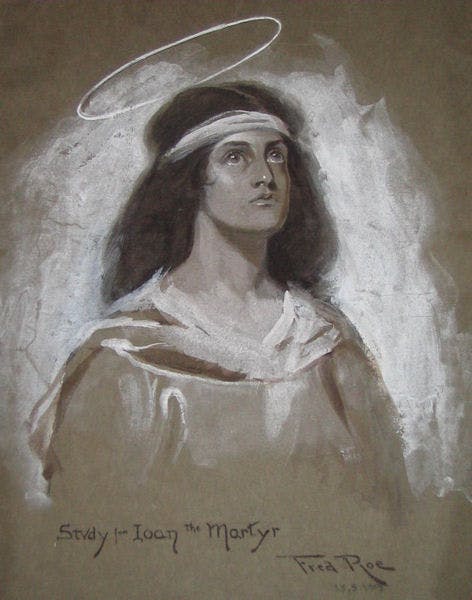
Frederic Roe
Study for Joan the Martyr, 1905
Private Collection, London
Whilst some of the models employed by Waterhouse clearly sat to him on a regular basis, the names and addresses recorded alongside the sketch of Echo and Narcissus suggests that Bantock and Beresford only first made his acquaintance around 1902-03. Several studies for the painting are known – including further preliminary sketches in the aforementioned V&A sketchbook, as well as more worked up individual studies for the head and figure of Echo. Whether either model sat to Waterhouse again remains open to conjecture – their services were clearly in demand from other artists, however more than an echo of both their likenesses appear in his 1905 painting of Lamia. At around the time of these discoveries, a hitherto unrecorded charcoal study by Waterhouse for Echo appeared on the art market with a price tag of more than fifty times that of what the original painting sold for in 1903. It is not clear if this version was drawn from Ethel or from another model, as the face differs somewhat from the one which appears in the finished oil.
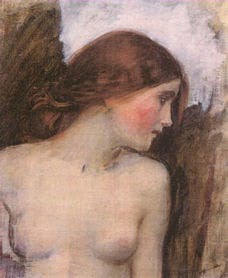
John William Waterhouse
Study for the head of Echo, c.1903
Christies 9 Feb 1990, no 254
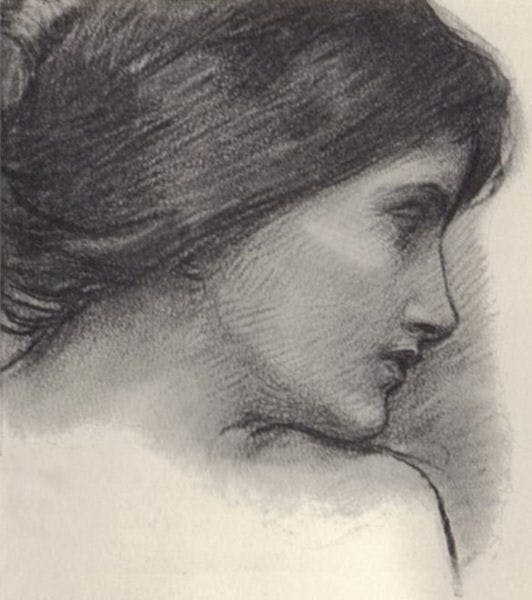
John William Waterhouse
Study, c1903
The Studio, 1908 vol.44, p.255
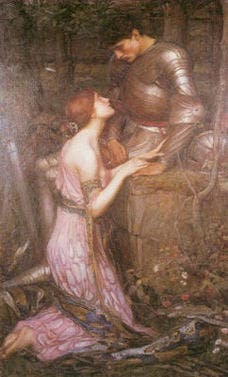
John William Waterhouse
Lamia, 1905
Private Collection
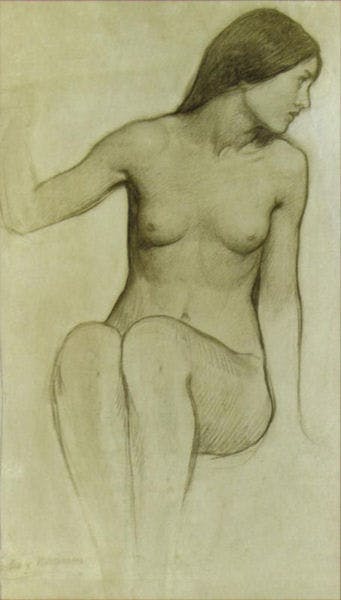
John William Waterhouse
Study for Echo from Echo and Narcissus, c.1903
Private Collection
Today John William Waterhouse’s pictures are more popular than ever, and the fascination for his art extends to the lives of the artist, his friends and his models. Over a hundred years after its first exhibition, we are only just beginning to find out more about the models who posed for Echo and Narcissus. Were it not for a pencil note in one of Waterhouse’s sketchbooks, they might have remained unidentified forever.
Select Bibliography
Austin Chester, The Art of Mr Fred Roe, The Windsor Magazine, March 1908
Wilfred Meynell, The Art of Mr Seymour Lucas, R.A., The Windsor Magazine, May 1905
Simon Toll, Herbert Draper 1863-1920: A Life Study, Antique Collectors Club 2003
Edward Morris, Victorian & Edwardian Paintings in the Walker Art Gallery & at Sudley House, HMSO 1996
© StB January 2008
Continue reading:
A Waterhouse Model Discovered
There has been much speculation into the identity of the models used by the artist John William Waterhouse. Whilst the focus had primarily been upon the female faces and figures that populate his pictures, research that I conducted in 2005 introduced the name of a well-known Victorian male model to feature within Waterhouse’s oeuvre.
Read more »
Letter to Miss Lloyd
The letter featured here, addressed by John William Waterhouse to a Miss Lloyd, comes from the private collection of Donald J. Kurtz.